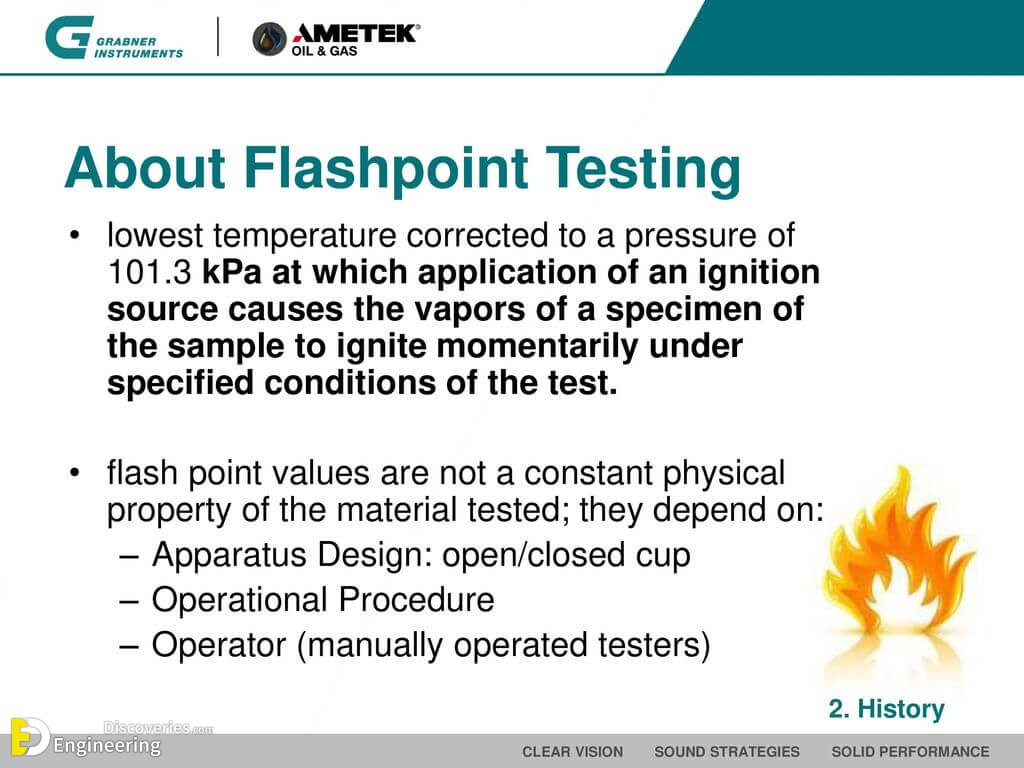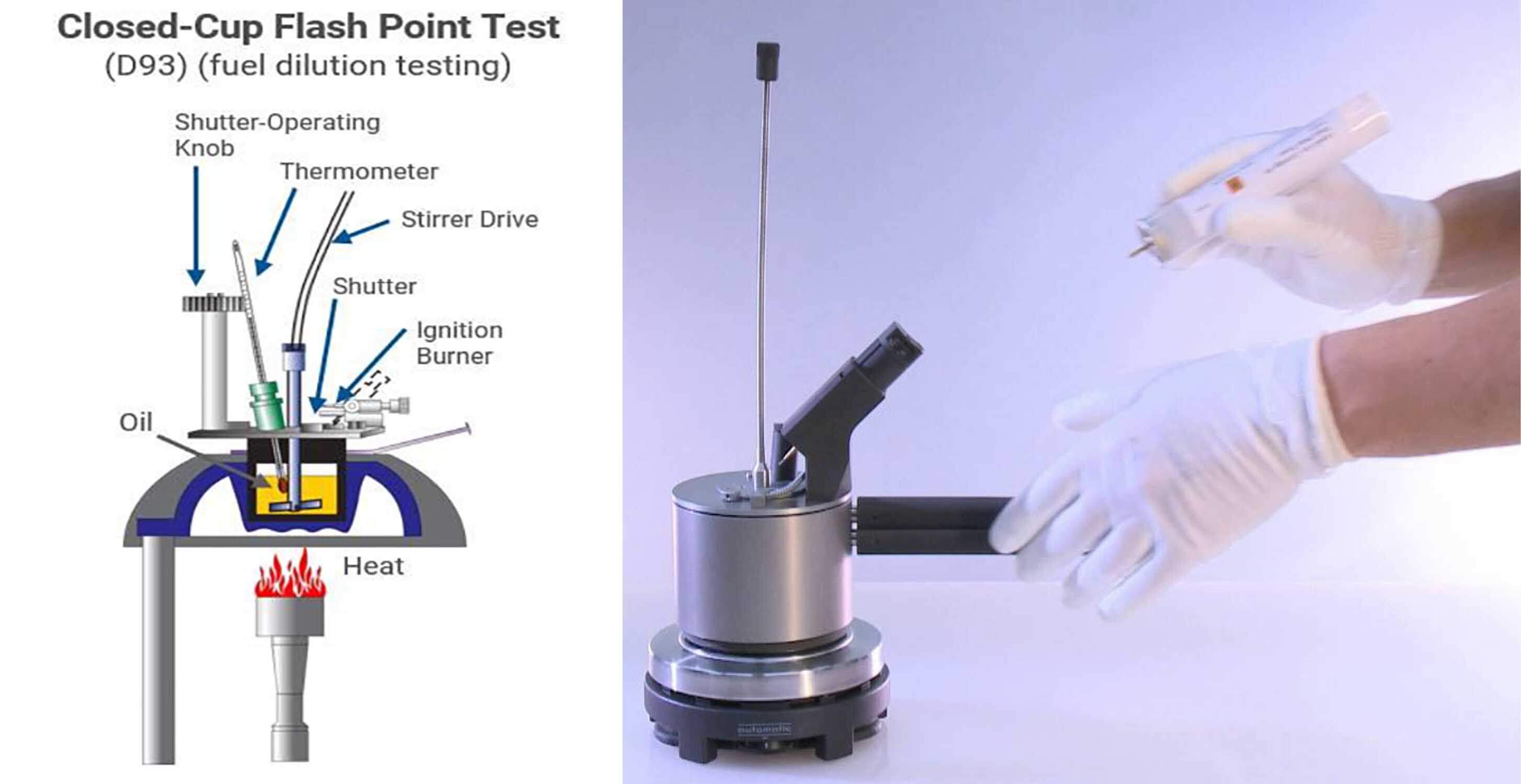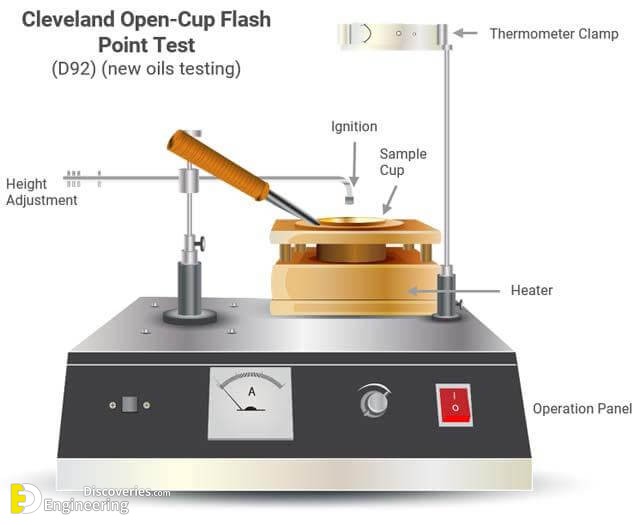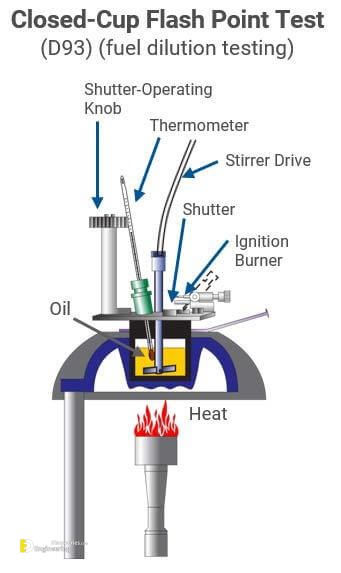A typical flash point test involves heating a small sample of asphalt binder in a test cup. The temperature of the sample is increased and at specified intervals, a test flame is passed across the cup.
The flashpoint is the lowest liquid temperature at which application of the test flame causes the vapours of the sample to ignite. The test can be continued up to the fire point – the point at which the test flame causes the sample to ignite and remain burning for at least 5 seconds.
Standard Test Methods
1- AASHTO T 48 and ASTM D 92: Flash and Fire Points by Cleveland Open Cup (more common for asphalt cement used in HMA)
2- AASHTO T 73 and ASTM D 93: Flash-Point by Pensky-Martens Closed Cup Tester


For more information watch this video



